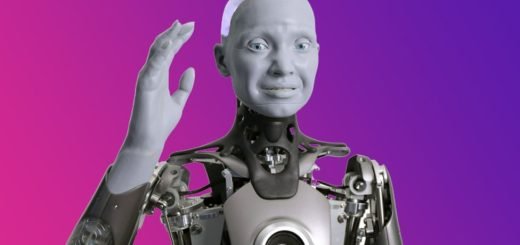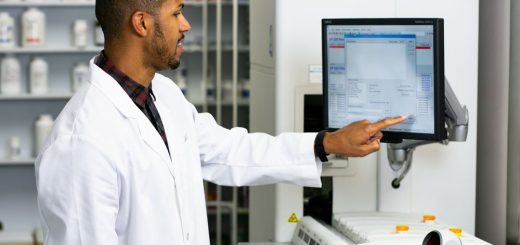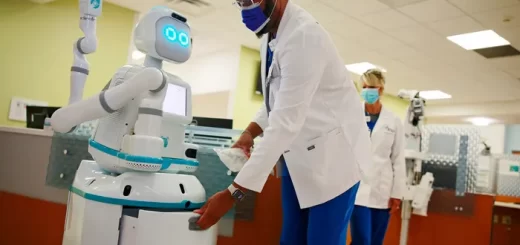Robotic vs laparoscopic bariatric surgery, Robotic bariatric surgery advantages and disadvantages
Robotic surgery is a minimally invasive alternative to open surgery and laparoscopy, Patients recover faster and get back to their daily life quicker. Robotic surgeries are becoming common practice in many hospitals, The robotic arm allows surgeons to move into areas of the body with great precision. Robotic surgery offers less trauma and less postoperative pain.
Robotic surgery
Robotics offers many benefits over conventional laparoscopy, including three-dimensional high-definition steady viewing, intraoperative guidance, training simulators, the use of wristed instruments with seven degrees of freedom, tremor filtration, scaled motion, and avoidance of the ‘fulcrum effect’, Robotics will lead to the full applicability of minimally invasive surgery benefits to the most complex surgical procedures, reducing the learning curves.
Although, Robotic surgery is not performed by a robot. Instead, highly experienced surgical oncologists perform the surgery using the computerized console to control the corresponding set of robotic tools to enhance the process, The da Vinci Surgical System’s instruments can bend and rotate in ways that the hands of the most highly skilled surgeons can’t.
Robotic bariatric surgery
Bariatric surgery helps people battle obesity and lose weight, it also can reduce symptoms related to type 2 diabetes, heart disease, high cholesterol, and severe sleep apnea. Weight-loss surgery changes your appearance, and your eating habits, It can have a profound effect on your physical and psychological well-being, The procedure is also known as bariatric surgery.
Robotic bariatric surgery is performed using the da Vinci Robotic Surgery System, The da Vinci robot is a surgical assistance tool that allows bariatric surgeons to perform weight loss surgery using computer-guided, magnified, 3-D visualization. The surgeon will maneuver the robot through small incisions in the patient’s abdomen, Using four robotic arms, the surgeon will make movements and the robot will translate the movement into ultra-precise movements inside your body.
Patients who are severely obese may be candidates for robotic weight loss surgery, Severely obese is considered anyone with a Body Mass Index of greater than 40. The increased visualization that the robotic system offers gives the surgeon more control over the movements of the severely obese patient.
Robotic surgery uses small incisions instead of large abdominal incisions and therefore is less invasive than traditional bariatric surgery. Bariatric surgery can reduce your risk of developing certain types of cancer, Yet only 1% to 2% of people who are eligible for bariatric surgery actually get the procedure.
Computer-assisted surgery holds great promise in various surgical fields, In bariatric surgery, as computer-assisted technology is well equipped with multi-articulated instruments that allow for delicate intra-abdominal movements, it is well suited for revisional procedures as well as those that require extensive intracorporeal suturing and knot tying. Computer-assisted laparoscopic surgery offers fewer side effects and faster recovery.
Robotic instruments can offer more force while operating on patients with thick abdominal walls because they are thicker than conventional laparoscopic instruments, since the instruments are fixed fulcrums, the surgeon does not have to struggle to counter the torque from rotating the instrument around a fixed pivot point. so, robotic surgery for patients with body mass indices (BMIs) more than 65kg/mg.
Many factors such as small gastric pouch and longer bypassed segment of the small bowel, have shown to result in better weight loss after Robotic Surgery, Robotic surgery is a useful adjunct for patients requiring conversion from laparoscopic adjustable gastric banding (AGB) to other bariatric procedures as it allows for advanced and precise dissection.
Advantages of Robotic-Assisted Bariatric Surgery
Robot-assisted surgical systems present a better visualization through high-definition 3D imagery that allows for an increased level of precision, dexterity, versatility, and control than conventional laparoscopy leading to fewer complications, The new generation robot-assisted system enables bariatric procedures to be performed through a 2.5cm transumbilical incision, at present, only sleeve gastrectomy and AGB have been performed using this approach.
Robotic surgery offers less trauma to the body, lower wound infection rate, shorter hospital stay, and minimally invasive technique for patients with higher BMI who may not be suitable candidates for a single-stage bariatric surgery. Robotic bariatric surgery offers better vision, The surgery robot has binocular vision, which increases depth perception and provides a sharp 3D view for the surgeon.
Robotic bariatric surgery offers an additional range of motion for the surgeon, plus more precision, It offers smaller incisions, With only an 8 mm incision – less than 1/3 of an inch – robotic surgery leaves fewer visible scars and reduces the risk of infection, Robots have “wrists” and their instruments offer a broader range of motion, but laparoscopic equipment has a lobster-like claw grip.
Robotic bariatric surgery offers better ergonomics, The robot allows the surgeon to sit at the console with controls within easy reach, This prevents physician arm or leg fatigue and offers more precise positioning during the procedure.
Robotic bariatric surgery offers shorter hospital stays and recovery times, This minimally invasive approach will mean less time in the hospital, less pain, and a quicker return to work for patients. robotic bariatric surgery can provide added precision when dealing with adhesions or scar tissue from a prior operation.
Benefits of gastric bypass surgery
The da Vinci Surgical System gives surgeons an increased view of the stomach and surrounding organs, which allows them to be more precise and controlled in during surgery. Compared to conventional laparoscopic weight loss procedures, robotic bariatric surgery may offer patients numerous potential benefits, including:
Robotic surgery offers quicker recovery, It presents reduced pain and scarring, It has a quicker return to regular routine, It presents fewer complications, It has less trauma to the body, It offers lower infection rates, It has shorter hospital stays, It has a much lower rate of gastrointestinal leaks, It has a lower risk of needing follow-up surgery.
Risks of Robotic bariatric surgery
Risks of robotic weight loss surgery include: Leaking from the area where the bowel was reconnected during surgery, Leaking from the area where the bowel was cut, Dehydration, Nutrition deficiencies, Food moves too quickly from the stomach into the small intestine.
Robots don’t have true haptics or touch: Because physicians are sitting at the console and looking at a screen, they don’t get the tangible feeling of interacting or touching the tissue, Surgical robots are very expensive, but they reduce expenses in other areas, such as shortening hospital stays and recovery times for patients.
Like conventional laparoscopy, robotic surgical systems lack tactile sensibility. Although the enhanced 3D imagery is provided by the robotic surgical technology, the major technical criticism of the system is its lack of tactile feedback, Although setup time may be improved as experience is gained with this technology, overall, it has an impact on the operative time.
Robotic surgical technology comes with a high operational cost, This high cost is related to the set-up time and the cost of acquiring this technology. Also, the cost of acquiring robotic surgical systems may be amortized over other surgical procedures performed.
Robotic surgery is associated with longer operative times and a higher cost with no proven advantage over the standard laparoscopic approach in terms of hospital stay and complication rate, whether computer-assisted laparoscopic surgery is more effective than conventional laparoscopic surgery in treating patients with morbid obesity, it appears to be less invasive and may have fewer side effects and faster recovery.
Recovery from robotic weight loss surgery
Keys to success after robotic weight loss surgery include: You should eat three balanced meals each day, and avoid snacking, You should drink plenty of water throughout the day, You should eat protein with every meal, preferably first, you will eat less food if you eat protein first, You should exercise regularly, Find a surgical weight loss specialist nearby, and set your location to show results near you.
You can download the application on google play from this link: Science online Apps on Google Play
Robotic gastrectomy, Robotic Surgery for the treatment of Stomach Cancer and Esophagus
Robotic Surgery vs. Laparoscopic Surgery, Robot-assisted surgery features, benefits & drawbacks
Surgical robots types, advantages, disadvantages, How is robotic surgery different from traditional
Healthcare robotics, Nursing care robots review, types, advantages, disadvantages & uses
Robot-Assisted Heart Surgery types, benefits, risks, Robotic heart vs. open-heart surgery
Interventional radiology types, Robotic endovascular systems advantages & disadvantages











